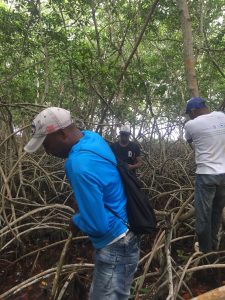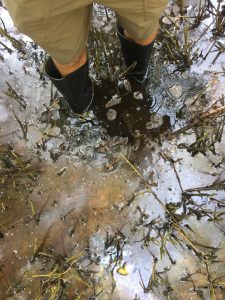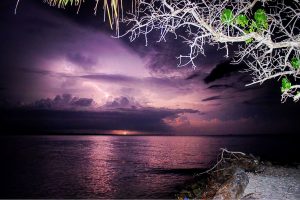It is said that the hardest part is getting there. After horrendous traffic in Los Angeles, expensive surprises after standing in an hour long queue at LAX, a restless redeye, and setting a personal best mile time through the Panama City Airport in order to make my connection, I would tend to agree. I arrived in Cartagena, Colombia, and my adventure had only just begun. I was greeted by smiling faces, and what must have been 100+ degree heat and 90% humidity.
On my first attempt to leave the airport and find a bus the organic way (practicing my Spanish), I was instantly drenched in sweat and decided to turn back towards the airport lobby to collect myself. I chugged water, purchased a coffee in order to gain WiFi access, found my coordinates, and plotted the most direct course towards the next air conditioner. Day and night number one was well spent exploring the beautiful and eclectic city of Cartagena. The next morning, I was to be picked up by a man I knew only as Daniel, a proud owner of one of the few vehicles in the area I was heading: Rincon Del Mar. I couldn’t have known it then, but the hardest part of my journey this summer was still on the horizon, and something the future may still hold. (TBD in future blog posts).
After a non-eventful, if not bumpy, three hour trip through stunning Colombian countryside, fincas, and dirt roads, we crested the last rolling hill and descended into the little fishing village of Rincon. The first thing I noticed was huge amounts of plastic lining either side of the route into town. Not surprisingly, plastic was strewn and lapping along the shoreline in front of my beachfront shack that I will be calling home for a while as well (everything is beachfront here). I dropped off my bags in a hurry, met with my main partners and points of contact, and headed straight to “town hall” for a community meeting I was to attend.
Shouting quickly ensued. I had been here for 20 minutes, and was already thrown between two clearly angry men arguing with each other over the best way to find a balance amongst a contaminated mangrove forest, plastic pollution, and their livelihood: a fishery in decline. Through the few words I understood of this unfamiliar and fast coastal Caribbean dialect, the complex intricacies of cultural difference became quite apparent. You see, it is easy to scold or fine a Californian for polluting their environment, but what would you do if your trash man never came? What would you do if your sewage system ran directly to you own backyard? What would you do if you weren’t even so lucky to own a porcelain throne? To make things more interesting, when the very subject of cultural difference and the word “gringo” came up more than once, I had to defend myself with a large smile and tell everyone in my less-than-mediocre Spanish that I am basically here as a volunteer. First and foremost, I came to learn from them and to help however I can, not point fingers. This meeting went on like this for three hours, plus another two hours of planning and debriefing, and I didn’t stop sweating for one minute.
I should mention now that I am here to support with carbon monitoring evidence, based on FAO methodology, the restoration of roughly 500 hectares of dense mangrove forest. For those unfamiliar, pound for pound, mangrove forests sequester roughly 6x the amount of carbon as the next best carbon sink, Amazon rainforest. They also provide a plethora of other ecosystem services such as protection against sea level rise and erosion, and they act as wildlife corridors, fish nurseries, and so on. Furthermore, I will be helping to develop an incentive based recycling and waste management program, as well as working with the fisherman here to increase their efficiency and “sustainable” practices. It looked a lot easier on paper.
Day one had come to an end, and another sleepless night began. There is no wireless internet here, electricity comes and goes often, and for the first few nights I didn’t have a functioning fan. It is amazing the things we can take for granted. The next morning, Teryn Wolfe, a MIIS alumni, my main advisor this summer and one of the three people who speaks English here, would return to Medellin where her non-profit E2E Foundation is based and won´t return until July. Trusting my heart and following a calling, I had made it here, I was feeling quite lonely, but I was set to take the next steps and embark on the real journey.
The next day dawned to the “cock-a-doodle-doo´s” of a thriving and wild rooster population. I lay in bed for as long as I cou ld stand the heat and the itching of bug bites, which wasn’t long, before I made my way down to the shore for a plunge into the sea, which is also uncomfortably warm here. I watched the fisherman head out on their “lanchas” as the sun rose, and thought of all the possible experiences this summer has in store for me. Later that morning, I met with my local partners Jalimer and Carmelo, to start becoming oriented, via canoe, to the mangrove forest we are striving to protect. Being from the United States, Jalimer made it quite clear from day one that I will be referred to as Tio (Uncle) Sam for the remainder of my stay here. I wish I was more proud of that moniker right now, but that’s a different story for another day.
ld stand the heat and the itching of bug bites, which wasn’t long, before I made my way down to the shore for a plunge into the sea, which is also uncomfortably warm here. I watched the fisherman head out on their “lanchas” as the sun rose, and thought of all the possible experiences this summer has in store for me. Later that morning, I met with my local partners Jalimer and Carmelo, to start becoming oriented, via canoe, to the mangrove forest we are striving to protect. Being from the United States, Jalimer made it quite clear from day one that I will be referred to as Tio (Uncle) Sam for the remainder of my stay here. I wish I was more proud of that moniker right now, but that’s a different story for another day.
Fast forward, and nearly two weeks have elapsed since my arrival here. I have stayed surprisingly busy, and am beginning to settle in. If not trudging through knee deep muck all day to establish our carbon sampling points, and taking the first round of samples to identify a baseline for carbon sequestration data, I have been helping Jalimer on his family’s organic farm. The farm, which provides food for the local community, is experiencing a water crisis due to upstream diversions, and we´ve had to dig deeper and deeper into the well with very little luck. On a positive note, we´ve built an awesome greenhouse out of bamboo which will be used to propagate mangrove tree seedlings. If not in the mangrove, or on the farm, I´ve been in the library with Carmelo, using my amateur GIS skills to help create maps of this corner of the sea (Rincon Del Mar). These maps will be shared with the world via GlobalForestWatch.org, as our small contribution to the goal of keeping the mangrove trees standing. That is, after all, one objective of the Center for the Blue Economy: Proving that economic vitality cannot be achieved in the long term without valuing and putting a price tag on things we often deem as invaluable or sacred. We as humans have the technology and skill to alter our surroundings in incredible and unnatural ways, but whether we like it or not, we are still products of our environment.
I think I´ve written enough for blog post #1, and if you’ve read this far, I sincerely commend and thank you. Life here is becoming easier and more enjoyable daily, and maybe that first step into the great unknown, and taking the time to understand it, is indeed the hardest.. That is still to be determined. The general community, however, unaccustomed to seeing a tourist stray this far off the beaten path for more than a few days at a time, have begun to warm up to me as well. I now get the local price on mangoes, avocados and cervezas, and the smiles, laughs, and “Tio Sams!” are becoming ever more abundant. I just hope I can leave this place better than I found it, that’s my goal. Stay tuned.










